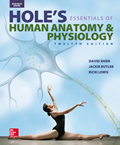1 A) a good blood supply B) the presence of an extracellular matrix C) an extracellular matrix that is solid, semisolid, or liquid. D) closely packed cells 2 A) macrophage B) mast cell C) chondrocyte D) fibroblast 3 A) areolar connective tissue B) elastic cartilage C) reticular connective tissue D) dense connective tissue 4 A) reticular fibers B) elastic fibers C) areolar fibers D) collagenous fibers 5 A) outer ear B) joints of the pelvic girdle C) nose D) costal cartilage of the rib cage 6 A) Plasma is the extracellular matrix of blood. B) Most blood cells form in the marrow of long bones. C) Blood maintains stable internal conditions in the body. D) Red blood cells are the only formed elements of blood. 7 A) skeletal muscle B) smooth and skeletal muscle C) cardiac muscle D) smooth muscle and cardiac muscle 8 A) smooth muscle B) cardiac muscle C) skeletal muscle 9 A) ability to contract B) impulse conduction through axons C) located in the brain, spinal cord, and peripheral nerves D) can communicate with muscles and glands 10 A) around the outside surfaces of organs of the respiratory system B) in areas where two surfaces may rub together C) in the lining of cavities and tubes that have openings to the outside of the body D) surrounding the kidneys 11 A) mucous membrane B) cutaneous membrane C) synovial membrane D) serous membrane 12 A) True B) False 13 A) True B) False 14 A) True B) False 15 A) True B) False 16 A) True B) False 17 A) True B) False 18 A) True B) False 19 A) True B) False 20 A) True B) False 21 A) True B) False 22 A) True B) False 23 A) True B) False 24 A) True B) False 25 A) True B) False 26 A) True B) False 27 A) True B) False 28 A) True B) False 29 A) True B) False 30 A) True B) False 31 A) True B) False





